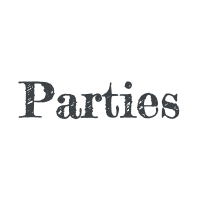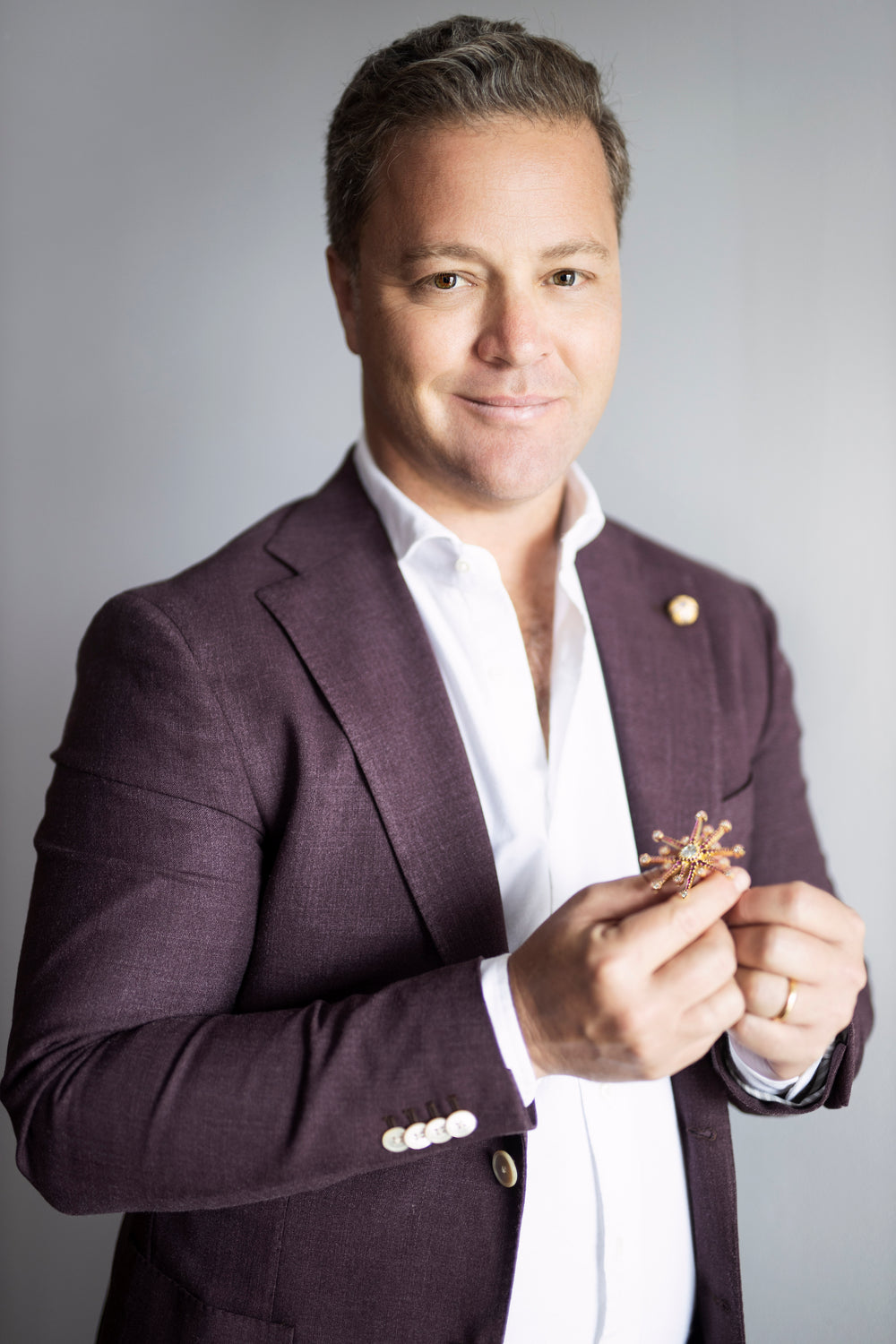The Rothschilds' Last Great Party
There are countless grand parties that live on only in the memories of those fortunate enough to have attended, but there are a special few that are recorded both in photos and descriptions. For me, the Rothschild ‘Bal Surréaliste’ is one of the great examples of a party that by chance has been preserved for the historical record and exceptional enough to continue to inspire.
A party of the modern world, designed to be experiential, it was only possible because of the lessons of the historic grand balls that came it before it. Intricately staged for the maximum amazement and pleasure of their (only sixty!) guests, I would have loved to have been there.
I can just imagine Marie-Hélène de Rothschild conspiring with her friend Baron Alexis de Redé on how to stage a grand event that was more intimate than the Bal Proust she had given the year before, yet include the theatrics and staging that had made Redé’s 1969 Bal Oriental so memorable.
Seeking the thrill of the unexpected, they chose a theme: Surrealism, and with it, they left behind the stodgy period costumes of the Proust ball, and entered a world without limits.

The Surrealist Ball
Since reopening the ancestral home of the Rothschilds in 1959 (the same year they were married), Marie-Hélène and Guy de Rothschild hosted many parties at Château de Ferrières and we are fortunate that two have been preserved in the public record.
Their first grand ball was to celebrate the 100th anniversary of Marcel Proust’s birth December 2, 1971. Their second, my favorite, a year later on December 12, 1972, was an invitation for Dîner des Têtes Surréalistes and would soon become the famous Surrealist Ball.
The glory days of the Surrealist movement had passed, but the effect of its revolutionary ideas was still fresh, and it was the perfect opportunity to honor their friend Salvador Dalí and his legacy.
In his 1985 autobiography, The Whims of Fortune, Guy de Rothschild remembers that instead of a standard invitation, “in the winter of 1972, an invitation cut out of a sky painting by Magritte with strange hieroglyphics floating among the clouds must at first have mystified the people who received them. But when it occurred to them to read the text in a mirror, they learned that they were invited to a surrealistic dinner party at Ferrières on December 12.”
When the night of the party arrived, recalls one of the guests, Baron Alexis de Redé, in his memoirs, “the chateau was floodlit with moving orange lights to give the impression that it was on fire.”
As the guests ascended the main staircase, everything appeared calm, harmonious, grandiose, as usual . .. except that an army of lackeys, lackeys with cats heads, seemed to have fallen asleep on the steps, the banisters, the landings, in the most grotesque positions.
Then they began an interminable voyage, groping in the dark through a dim labyrinth, a forest of black ribbons that had to be separated like dense branches. Now and then some of the liveried cats would suddenly appear, bearing torches: weird phantom animals amid the giant cobwebs. Long-forgotten texts of Carco or Max Jacob came to mind. The way was so long that finally, shivering with delightful horror, the guests passed through the last portals of this surrealistic hell with a sigh of relief.
They entered the tapestry salon, impassive as ever in its gold, reds, and pinks where Marie-Hélene (with the head of a hind weeping diamond tears) and I (wearing a headdress representing a still-life arrangement on a huge platter) tried to suppress our cries of admiration, and appear to recognize the raving mad (disguised) arrivals. All the while, a concealed pianist was playing music by Satie [1].
In the salons, a fantastic assortment of masks inspired by Magritte, Max Ernst, de Chirico, Picabia, Delvaux, Tanguy and, needless to say, Dalí, congratulated each other on their ingenious ideas.
And suddenly there appeared the divine Dalí himself, who'd needed only to wax his mustache without having to change his head; he was sedately seated in a wheelchair pushed by two nurses, under an umbrella of dazzling flashbulbs; in his hand of genius, a laser beam!
His wife, Gala, wore her most gala evening dress.
Leonor Fini was a nightingale. The painter Stanislao Lepri had buried a host of little celluloid children in his long false pepper-and-salt beard.
One stumbled over all kinds of fallen fruit: apple-headed figures stretched their necks to vie with pear-headed ones; architectural monuments envied clockworks, original animals competed with imaginary creatures, beasts of Hell pursued fugitives from Paradise on Earth.
Then there was the unexpected: Audrey Hepburn wore a cage over her head; she had to open a little door in order to eat!
Michel Guy, the minister of culture, had stabbed his bald pate with a dagger, dripping rubies.
Denise Thyssen was the woman with two faces: Above her own, she wore a headdress that was an exact replica of it, the blond hair of both inextricably intermingled; one didn't know which one to talk to it was disconcerting to hear the reply come out of the wrong mouth!
Baron Alexis de Redé had is own special costume: “I wore a series of four masks, and only half my face was shown. Above it was a series of drawers containing photographs of Marie-Hélène as the Mona Lisa. For this mask, appropriately designed by Dalí, I won second prize. Later, I gave this mask to the Dalí Museum at Figueres.”
As the time for dinner arrived, the guests were given cards to indicate their tables: the table of the Sleeping Cat; the table of the Dethroned Queens; the table of the Shoes Fit to be Tied . .. but this gave them no indication of where to go. So the guests wandered about in disorder, mischievously guided by butlers wearing top hats, carnations in their buttonholes, whose mission was to solve these puzzles and finally lead them to their places.
On each table, covered by a tablecloth representing the sky, there was a centerpiece inspired by some surrealist painter or poet, designed to be at the same time crazy, incongruous, and poetic. For example, on the table entitled "Eggs à la Florentine" was a mound of cooked spinach, pierced by the carcass of a giant bird, garnished with women's breasts.
At each place setting there was a fur-covered plate and a place card: a square of sky held between the ruby-red lips of Mae West; a pale blue dinner roll--the famous pain peint (the two words are pronounced the same in French, their literal translation being "painted bread"; a wine glass with the label vin vain (another play on words, since these two are also pronounced alike, and the meaning or rather, lack of meaning is "vain wine"); there was also a bubble-blower and a menu.
The menu, inscribed on a background of sky and clouds, was all the more hallucinating because none of the sixty guests read the same words. And such delirious words! Double meanings, outrageous puns. Marie-Hélène and her friends must have had a lot of fun finding these ideas, or rather, trying to confuse the ideas! French-speaking readers may appreciate the cheese course: Les choses dégoulinantes (the dripping things) for some were beaucoup de Brie pour rien (a lot of brie for nothing) for others.
Since the dishes were described so wildly, nobody had the slightest idea of what was going to be served next.
Finally came the Dessert des Tartares (dessert of the Tartars - the barbarians) - or, as on another menu, "At last!”. The warmly applauded climax was a huge platter carried by eight men, with a nude woman reclining on a bed of roses, all made of edible spun sugar, to be hacked to pieces.
After dinner, the festivities moved to the salons, to dancing in a Turkish nightclub, to another salon, where a photographer took pictures of the guests seated on a Dalí sofa in the form of a pair of lips, underneath a picture of Mae West [2]. The whirl went on till dawn. Everyone was enchanted with himself, everyone was enchanted to be there . . . in short, everyone was enchanted.
The next morning, our everyday heads seemed very strange indeed!
The Surrealist Ball was one of the last grand parties. As a valediction, Baron Alexis de Redé shared:
“All these parties were in the tradition of the great balls that have been held in France for centuries. You can trace them back to the days of Henri Ill and the masquerades and carrousels that so appealed to Louis IV. In the last century, there were the Beaumonts and the Noailles, there was Bestegui and Cuevas. And coming in at the latter end of the century, the Rothschilds and I made an impressive attempt to round the century off with some magnificent and memorable evenings.
It is not possible to repeat such things now for so many reasons. But it is fascinating to look back and to remember these occasions, which dominated our thoughts and plans to such an extent for so many months. I am happy that I took part in so many, and happy that I gave some myself.”
Footnotes
[1] Erik Satie, who wrote the score for the ballet Parade, causing Guillaume Apollinaire to coin the term surrealism.
[2] The Mae West Lips Sofa (1937) is a surrealist sofa by Salvador Dalí, and is a real world incarnation of the sofa Dalí painted in his "Face of Mae West which may be Used as an Apartment” (1935) probably based on the painting.
The wood-and-satin sofa was shaped after the lips of actress Mae West, whom Dalí apparently found fascinating. It measures 86.5 x 183 x 81.5 cm. Edward James, a rich British patron of the Surrealists in the 1930’s, commissioned this piece from Dalí.
The UK arts minister, John Glen said in 2017, This iconic piece is considered to be the single most important example of surrealist furniture ever made in Britain.
The sofa was introduced commercially in 1973 by Bocaccio Design, known also as BD Barcelona Design.
In the Dalí Theatre museum in Figueres, there is a ‘Mae West‘ room It is a three- dimensional living room scene installation, with custom built furniture that takes shape as the ‘ face’ of Mae West, when viewed from a certain angle.
Guest List & Costumes
Hosts
- Guy de Rothschild (wore a fur hat with a headdress on top of it that represented a still-life arrangement with a stuffed pheasant and pheasant skeleton on a huge platter)
- Marie-Hélène de Rothschild (wore a head of a hind weeping diamond tears, the mask was detachable so that only the antlers remained)
Some of the (only sixty!) Guests
- Jacqueline Delubac (French Actress, wore an apple in front of her face, a nod to René Magritte’s The Son of Man 1964)
- Salvador Dalí (painter, holding a laser and an automatically folding and unfolding umbrella, arriving in a wheelchair with his wife Gala and two attendants/nurses including Amanda, his muse, dressed up in a jawbone)
- Gala Dalí (wore her most gala evening dress)
- HRH Princess Maria Gabriella de Savoie (Daughter of Italy’s last king)
- Claude Lebon (Society Dentist)
- Charlotte Aillaud (Parisian Socialite and sister of French Actress/Singer Juliette Gréco)
- Baroness Denise Thyssen-Bornemisza (Brazilian 4th wife of Hans Heinrich Thyssen-Bornemisza, a German Industrialist, was the woman with two faces: Above her own, she wore a headdress that was an exact replica of it, the blond hair of both inextricably intermingled; one didn't know which one to talk to it was disconcerting to hear the reply come out of the wrong mouth)
- Guy Baguenault de Duchesse (French Aristocrat)
- Marisa Berenson (supermodel, star of Stanley Kubrick’s Barry Lyndon, as a pink tulle pyramid of flowers with a bird cage)
- Charles de Croisset (French Ministry of Finance, wore his face painted white with a top hat that had a small red chair perched on top)
- Commandant Paul-Louis Weiller (French Industrialist, wore a mask)
- Rolf Libermann (Artistic Director of Paris Opera)
- Hugues Gall (Assistant to Rolf Libermann and future Director of Paris Opera)
- Audrey Hepburn (American Actress, wore a cage over her head; she had to open a little door in order to eat)
- Baron Alexis de Redé (French Socialite, Mona Lisa mask designed by Salvador Dalí)
- Nina Espirito-Santo (Wife of Portuguese Banker)
- ? (Came as the man with the golden face)
- Hélène Rochas (perfumer, wore a gramophone on her head, designed by Yves Saint Laurent)
- Michel Guy (Minister of Culture, stabbed his bald pate with a dagger, dripping rubies)
- Stanislao Lepri (Italian Painter and lover of Leonor Fini, had buried a host of little celluloid children in his long false pepper-and-salt beard)
- Leonor Fini (Argentine Italian Surrealist Painter, dressed as a nightingale, famous for her costumes at Bestegui ball Oiseaux ball, see Modern Interiors May 2023)
- Bridgette Bardot (French Actress, as the snow queen, designed by Leonor Fini)
- Baron Hughes Alfred Frédéric “Fred” de Cabrol & Marguerite “Daisy” de Cabrol (French Aristocrats, Fred wore a mask in the shape of two bird’s heads, Daisy wore a dressed adorned with golden leaves, and a headdress of a bare tree branch with eye shaped fruit.)
- Herve & Nicole Halphand (French ambassador, Nicole came wearing a green mask of petals)
- Joy de Rohan Chabot (French artist and aristocrat, came in a green botanical dress with fruit as breasts)
- Carole (?, came in a striped dress and top hat)
- Princess Ghislaine de Polignac (French aristocrat, came with a headpiece of artificial hands and pompoms)
- Kazim Aga Khan (Islamic Royal, wore an eye patch with an eye on it)
- David de Rothschild (French Banker, wore a large green egg)
- Valerian Rybar (Designer, with three extra pairs of eyes)
- Bernard Lanvin (Head of fashion house Lanvin, disguised as a gas lamp post)
- Minka Strauss (Rothschild, won the door prize, wearing a silver snail made of an unknown material)
- Duke and Duchess Claudine de Cadaval (Portuguese aristocrats, Claudine came disguised as a white brick wall)
- Nicole Salinger (French socialite, carried on her head a green and mauve cauliflower)
- Count and Countess Pierre Cheremetieff (Russion aristocrats, he only his‐and‐her costumes, wearing twin rhinoceros heads)
- Andrea “Cappy” Badrutt (Socialite, came as a green park, designed by Marc Bohan)
- Mrs. Edmond Dory (?, came as a cage of birds, designed by Marc Bohan)
- Maria "São" Schlumberger (Portuguese socialite, came decorated with butterflies)
- Charlotte Aillaud (nee Gréco) (wife of the architect Émile Aillaud, covered her bust and face with bronze armor. The lips and chin were removable on a stem. Designed by Claude Lalanne)
- Francois‐Marie Bannier (French author and photographer, had hands and winged feet protruding from his curly wig. In one hand he carried a compact containing gold powder and made of a crushed bronze foot. Designed by Claude Lalanne)
- Claude Lehon (?, wore a white‐haired woman's wig with his face painted in a seascape by Francois‐Xavier Lalanne)
- Prince & Princess Carlo Caracciolo (Prince of Castagneto, Duke of Melito, and co-founder of L’Espresso and La Repubblica, wore a huge globe shadowing four white masks, with antennae.) Princess Jean de Caracciolo had on a yellow dress with green octopus turban).
- Helene David‐Weill (French socialite, came as blonde Cleopatra, with a floor length black wig supporting a plastic of hands, legs, lips, frogs and snails that flashed in red like a traffic signal.)
Designers Present
- Yves Saint Laurent, fashion designer
- Alexandre, hair dresser
- Marc Bohan, fashion designer for Christian Dior
Table Decorations
- Table aux Souliers fous a lier (Table of the Shoes Fit to be Tied also know as the Mad-to-Mate Shoes Table)
- Table aux cailloux ombreux (Shady Pebble Table)
- Table aux Tortues attendries (Amorous Tortoises Table)
- Table ei-git Caracalla (Here goes Marcus Aurelius Table)
- Table aux Poissons solubles (Soluble Fish Table)
- Table aux de dissection - Parapluie, machine a eerire (Dissection Table - Umbrella, Erection Machine)
- Table aux aux Forets Insectivores (Table at Insectivorous Forests)
- Table aux chat d’or qui dort (The Golden Sleeping Cat, depicting sleeping cats and mice eating cheese)
- Table aux a l’oeuf florentine (Eggs à la Florentine Table)
- Table aux aux Liqueurs alchimiques (Alchemical Liquor Table)
- Table aux Colombes de pêche (Table with fishing doves)
- Table aux Rhinoceros en plein genie (Table of Ingenious Rhinoceri)
- Table aux aux Reines déchues (Table of the Dethroned Queens)
- Table aux Squelettes d’ivoire fleuris (Table with flowered ivory skeletons)
- Table aux Statues eeroulées (Table with Rolled Up Statues)
- Table aux perspectives métaphysiques (Metaphysical Perspective Table)
- Damaged Doll Table
The Food
At each place setting in addition to a bubble blower, there was a fur-covered plate and a place card: a square of sky held between the ruby-red lips of Mae West.
- The bread: a pale blue dinner roll--the famous pain peint (the two words are pronounced the same in French, their literal translation being "painted bread”
- The wine: a wine glass with the label vin vain (another play on words, since these two are also pronounced alike, and the meaning or rather, lack of meaning is "vain wine”)
- The cheese course: Les choses dégoulinantes (the dripping things) for some were beaucoup de Brie pour rien (a lot of brie for nothing)
- The soup: Soupe extra Lucide Extra-Lucid Soup
- Imbroglio de Cadavere Exquis (Imbroglio Confusion of Exquisite Cadavers)
- Lady and Sir Loin
- Tubercules en Folie (Crazy Tubers)
- L’es-tu (Are you?)
- (Peaches and goat cheese howling in sadness)
- The dessert: Dessert des Tartares (dessert of the Tartars - the barbarians) - or, as on another menu, “Enfin” (At last), a huge platter carried by eight men, with a nude woman reclining on a bed of roses, all made of edible spun sugar, to be hacked to pieces.
Books on The Surrealist Ball
The Whims of Fortune: The Memoirs of Guy de Rothschild by Guy de Rothschild
Published in 1985, The Whims of Fortune is the exceptional autobiography of Guy de Rothschild. Well written and fascinating, it is one of the few first-person accounts by any member of the Rothschild family. He may have felt compelled to write this book to share his humanity after the traumatic nationalization of his family business, the Rothschild Bank of France.
Legendary Parties 1922-1972 by Prince Jean-Louis De Faucigny-Lucinge
Published in 1987, Prince Jean-Louis De Faucigny-Lucinge, a French aristocrat and frequent host and guest, chronicles what he believed were the most incredible parties of the 20th century. Each party is exceptional, and this is a priceless record of the most inspiring parties ever thrown.
Alexis: The Memoirs of Baron de Redé edited by Hugo Vickers
Published in 2005, this hard to find autobiography of the Baron de Redé (edited by Hugo Vickers) is fascinating. It is filled with well-known stories of events and personalities, yet the difference lies not in the fact that Baron de Redé was there, but in his unique perspective.
Beautiful People of the Café Society by Thierry Coudert
Published in 2016, Thierry Coudert does a masterful job of giving context to the amazing scrapbooks created by the Baron de Cabrol to commemorate his glamorous life.
Bel Amueblement provenant des Collections de Valerian Rybar et Jean-François Daigre, Christie's Paris June 5, 2003
Auction catalog containing pieces from the collection of interior designers Valerian Rybar and Jean-François Daigre, including some of the centerpieces they designed for the Rothschild Surrealist Ball.
Elegant Jewellery from the Estate of Jacqueline Delubac, Christie's, Geneva November 18, 1998
Jewellery from the estate of French actress Jacqueline Delubac, a guest at the Rothschild Surrealist Ball.
Muebles et Objets d'Art provenant de l'Hotel Lambert et du Château de Ferrières appartenant au Baron de Redé et au Baron Guy de Rothschild, Sotheby Parke Bernet Monaco S.A., Monte Carlo, May 25-26, 1975
Auction catalog containing pieces belonging to Baron Alexis de Redé (including pieces inherited from Arturo Lopez-Willshaw) and Baron Guy de Rothschild from Château de Ferrières.
Baron Alexis de Redé remembers the auction in his memoirs:
"There was a question as to what to do with Arturo [Lopez-Wilshaw]'s great collections. Some things Patricia [Lopez-Wilshaw] kept and some things I kept. But a few years later I sold much of the collection in the first ever sale at Sotheby's in Monaco, which I organized with Guy de Rothschild in 1975.
Sotheby's and Christie's were not allowed to have auctions in Paris, so had a successful series of important sales in Monaco which continued until 2001, when the ban was lifted. I was on the advisory board of Sotheby's. This was an important sale, because Arturo had an extraordinary talent for buying objects, and his collection was extremely valuable.
That particular sale also included some pieces from Ferrières that Guy no longer needed, and is still remembered as one for the history books. There was a reception attended by Prince Rainier and Princess Grace."
Muebles et Objets d'Art provenant du Château de Ferrières appartenant au Baron Guy de Rothschild, Sotheby's, Monaco December 3, 1994
Auction catalog containing pieces belonging to Baron Guy de Rothschild from Château de Ferrières.
Rothschild Masterpieces, Christie's, New York, October 3-17, 2023
Auction catalog in three volumes containing most of the interiors of the Rothchild's Hôtel Lambert.







